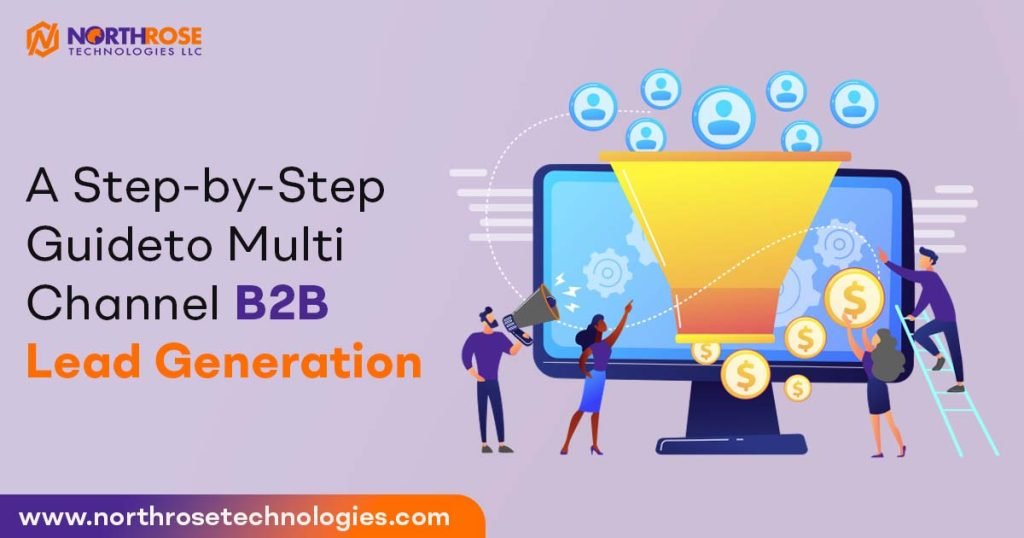Creating high-quality B2B leads is vital for long-term growth and profitability if you wish to establish a strong mark in today’s fast-paced business space. Traditional lead-generating strategies must be revised to meet the market’s changing demands.
Businesses need to embrace multi-channel B2B lead generation methods that employ numerous online and offline channels to attract and convert potential clients to thrive in the digital age.
What is Multi-channel B2B lead generation?
Multi-channel B2B lead generation is a comprehensive strategy that guarantees you reach your target audience across an array of channels such as social media platforms, email marketing, content marketing, SEO, events, and more.
You improve your chances of reaching potential consumers where they are most active and engaged by diversifying your lead-generating activities.
What does each digital channel represent?
In order to have an effective B2B lead generation strategy, you need to evaluate all the viable channels and how they can work for you.
Each channel serves a purpose of its own:
- SEO is where you provide answers to questions
- Paid media is how you create awareness and get conversions
- Media buys are extremely useful for establishing a strong presence
- Outbound marketing is reserved strictly for highly targeted efforts
- Events and offers make up the core of all campaigns
Whether you’re a seasoned marketer or just starting, these steps will help you create a robust lead-generation strategy that delivers results.
Step 1: Define Your Target Audience
Having a solid understanding of your target audience is the foundation of any effective B2B lead-generating strategy.
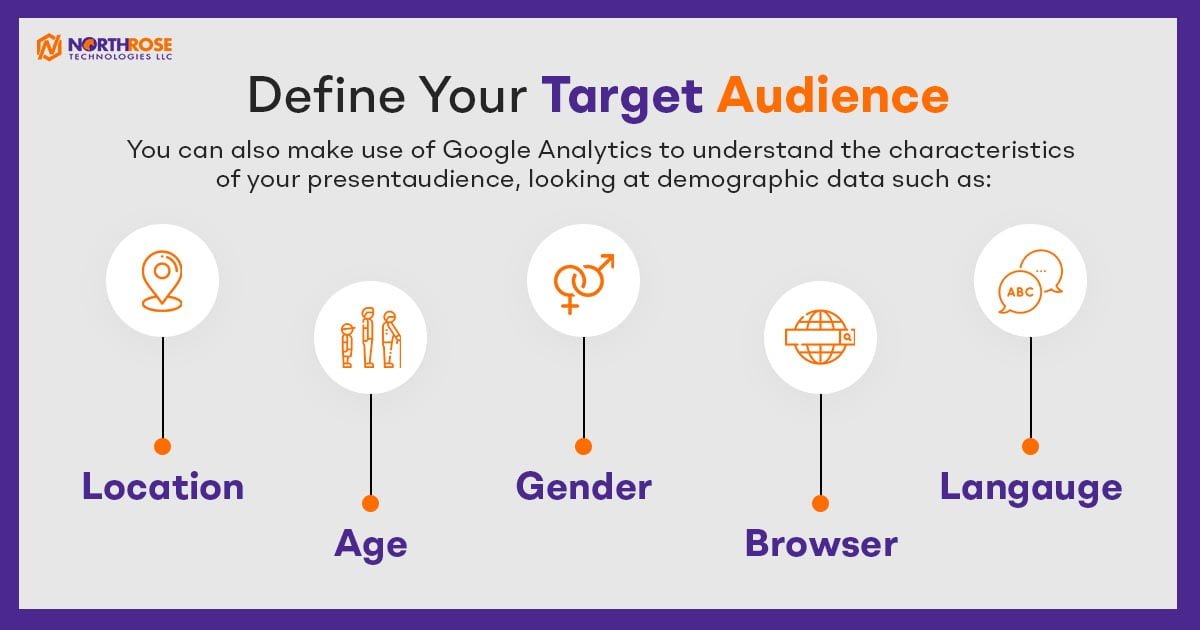
Begin by developing thorough buyer personas for your ideal customers. Consider the industry, the size of the organization, the job title, the problematic areas, the goals, and the challenges.
The more particular you can be, the better tailored your messaging will be and consequently, the most effective routes for reaching them will be chosen.
You can also make use of Google Analytics to understand the characteristics of your present audience, looking at demographic data such as:
- Location
- Age
- Gender
- Browser
- Language
Step 2: Test Your Strategy Against Competitors
The next step is to conduct competitive research to determine where your competitors are investing.
The good news is that you can use tools like Google Analytics Benchmark Reports, Semrush, and Pathmatics to learn everything your competitors are doing. These tools will show you which networks they are advertising on and how much money they are spending on them.

Then you must determine what lies between where you are and where your competitors are.
However, when it comes to B2B lead-generating tactics, it is important to have an open mind. Even though you can observe a competitor’s technique via Google Analytics, refrain from assuming they’re always using it effectively or have the same target market as you.
You need to consider some important factors:
- The difference in spending
- Your cost per acquisition for each channel
- The saturation point for each channel
In order to ensure that your strategy truly works, you need to be open to testing.
Step 3: Optimize Your Website and Develop High-Quality Content
Your website serves as your company’s internet showroom. Check that it is user-friendly, mobile-responsive, and lead generation-optimized. To urge users to take action, use clear and engaging call-to-action (CTA) buttons throughout your site.
Strategically use lead capture forms to collect contact information from interested prospects. Maintain and update your website on a regular basis to keep it fresh and relevant.
The heart of modern B2B lead generation is content. To attract and engage your target audience, you must create valuable, informative, and relevant content. Create a content plan that tackles your buyer personas’ pain points and issues. Blog entries, whitepapers, eBooks, webinars, and videos are all examples of content.
Ensure that your content is well-researched, informative, and optimized for search engines (SEO) to increase its visibility.
Step 4: Make Enticing Offers
It’s important in B2B marketing to have a hook or catchy phrase that draws your target client. You must remember that B2B sales and marketing go hand in hand.
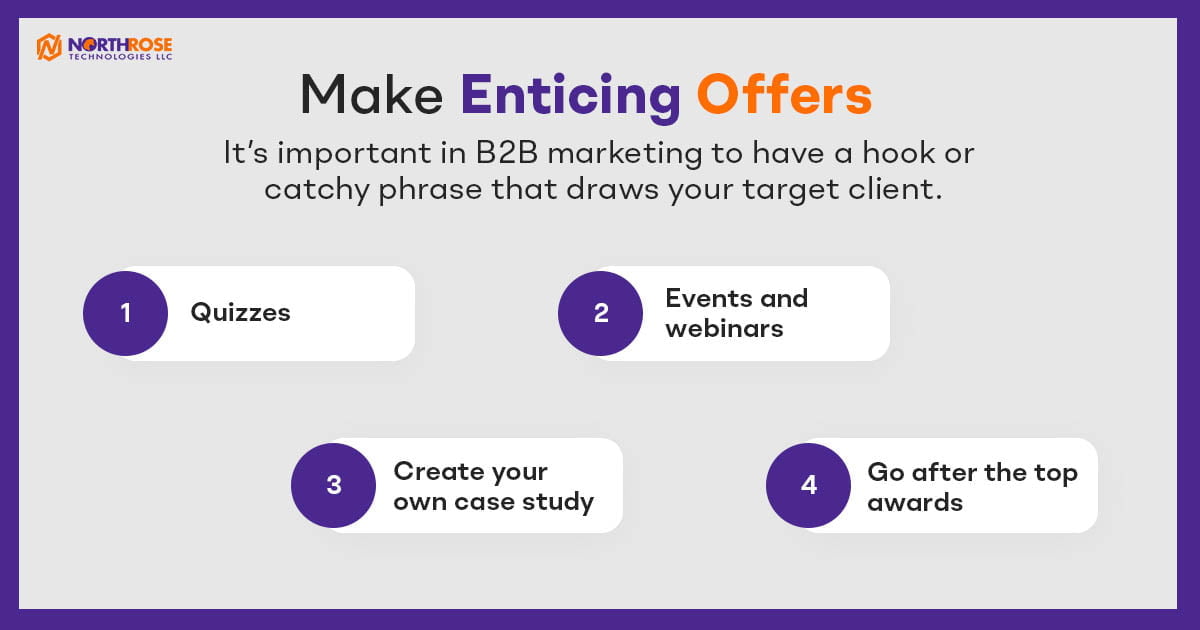
You need to make the exchange profitable in order to entice clients to provide their information. Although trends in “lead magnets” have changed over time, the following list could be used as inspiration for your B2B marketing initiatives.
- Quizzes
- Events and webinars
- Create your own industry case study
- Go after the top awards in your industry
Step 5: Implement Email Marketing
Email marketing is still one of the most successful ways of generating B2B leads. Create and segment your email list to ensure that your communications are tailored to each individual subscriber.
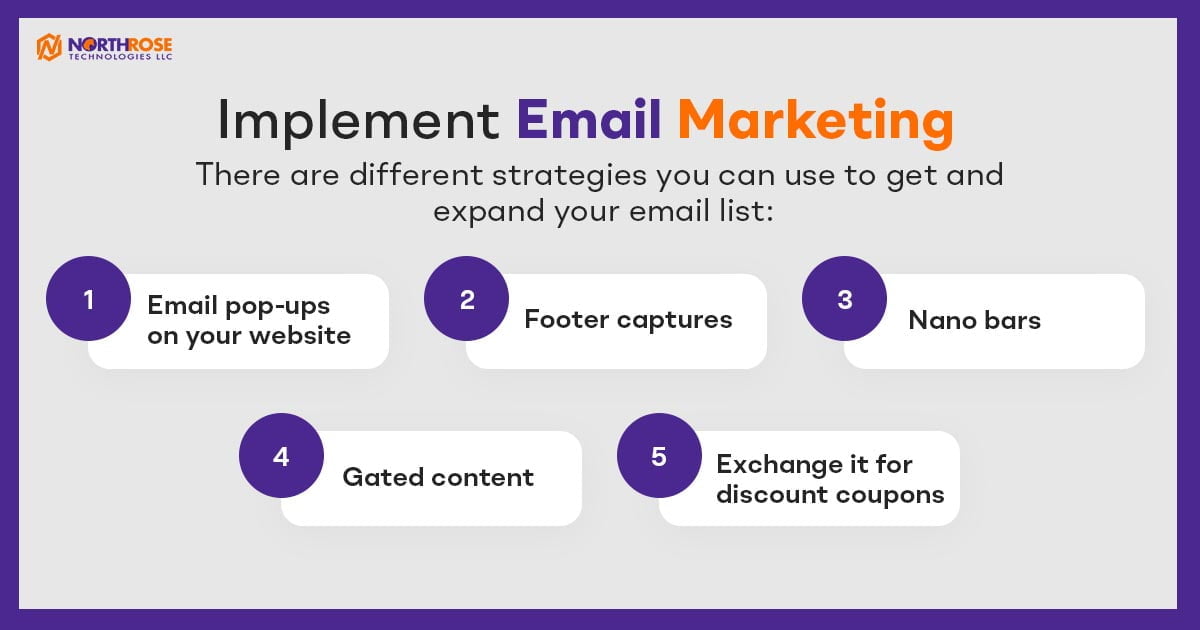
There are different strategies you can use to get and expand your email list:
- Email pop-ups on your website
- Footer captures
- Nano bars
- Gated content
- Exchange it for discount coupons
Develop appealing email campaigns that offer value, address issues, and have strong CTAs. Using the recipient’s name and tailoring the material to their interests is vital.
Monitor open rates, click-through rates, and conversion rates on a regular basis to fine-tune your email approach.
Step 6: Manage and Nurture Your B2B Leads
You can nurture a potential lead while maintaining a competitive advantage if you have a defined sales funnel aimed at retention and re-engagement marketing especially targeted to your existing or peripheral leads.
The goal of B2B lead generation is to build a steady stream of potential leads. If the flow gets interrupted, you risk losing as many leads as you catch.
Some effective lead nurturing strategies that also make customers keep coming back include:
- Social Media: Use your social media accounts to develop thought leadership and encourage people to click through to gated content where they will be requested to provide contact information.
- Referral Programs: Referral programs help in the development of an ecosystem of social and professional networks, all of which are linked to your brand.
- Paid advertising: Paid advertising, such as pay-per-click (PPC) advertising are highly targeted ad campaign that aligns with your buyer personas and lead generation goals.
Step 7: Attend and Host Events
Participating in industry events and trade exhibitions, both online and offline, is a great way to generate B2B leads.
Attend relevant conferences, webinars, and workshops to meet potential customers. To demonstrate your knowledge and create leads, consider holding your own events, such as webinars or workshops.
Step 8: Measure, Analyze, and Optimize
Without accurate data, you cannot get the big-picture results.
Continuous improvement is essential for the success of B2B lead generation. Measure and analyze the performance of your multi-channel lead-generating endeavors on a regular basis. Businesses that use data-driven marketing are six times more likely to be profitable.
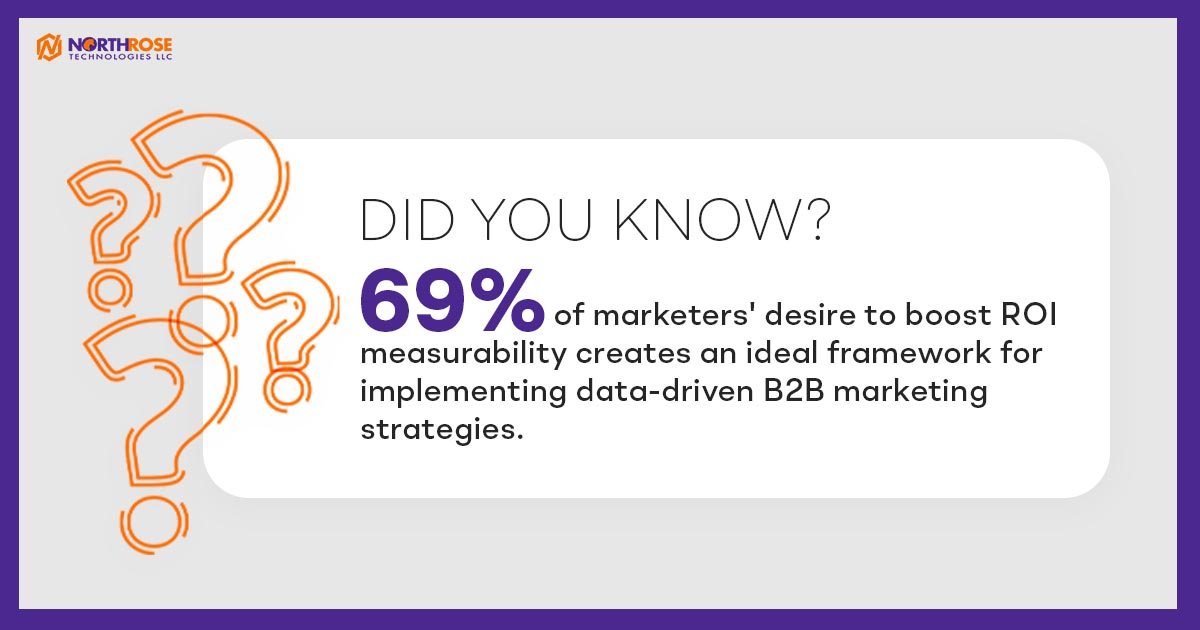
When you combine this with the fact that 69% of marketers seek to increase ROI measurability, you have the perfect recipe for data-driven B2B marketing efforts.
Track critical metrics such as conversion rates, lead quality, and ROI using technologies such as Google Analytics, CRM software, and marketing automation systems.
Assess what is working well and what needs to be improved, and then adapt your strategy accordingly.
Multi-channel B2B lead generation is a dynamic and ever-evolving process that requires dedication, creativity, and adaptability. By following these 8 essential steps, you can create a robust lead generation strategy that helps you reach and convert your target audience effectively.
North Rose Technologies develops custom strategies, keeping your vision and goals in mind, Remember that the key to success in multi-channel B2B lead generation is to continually refine your approach based on data and insights.

